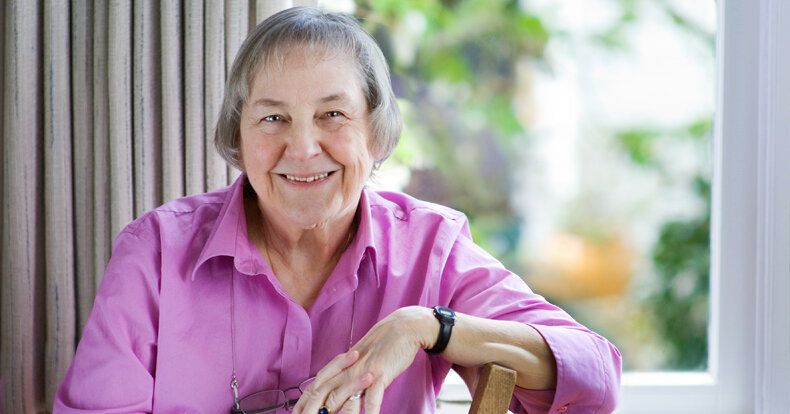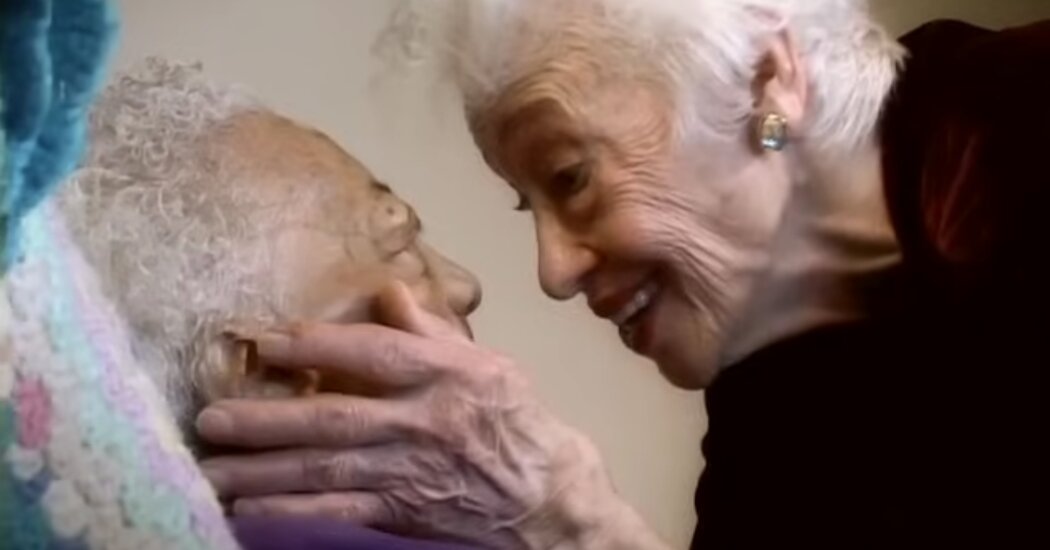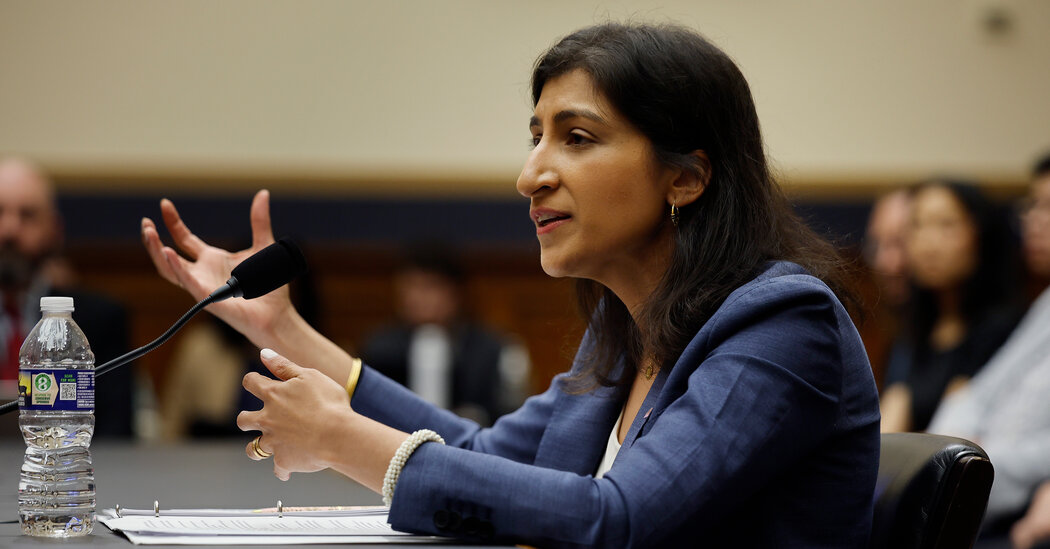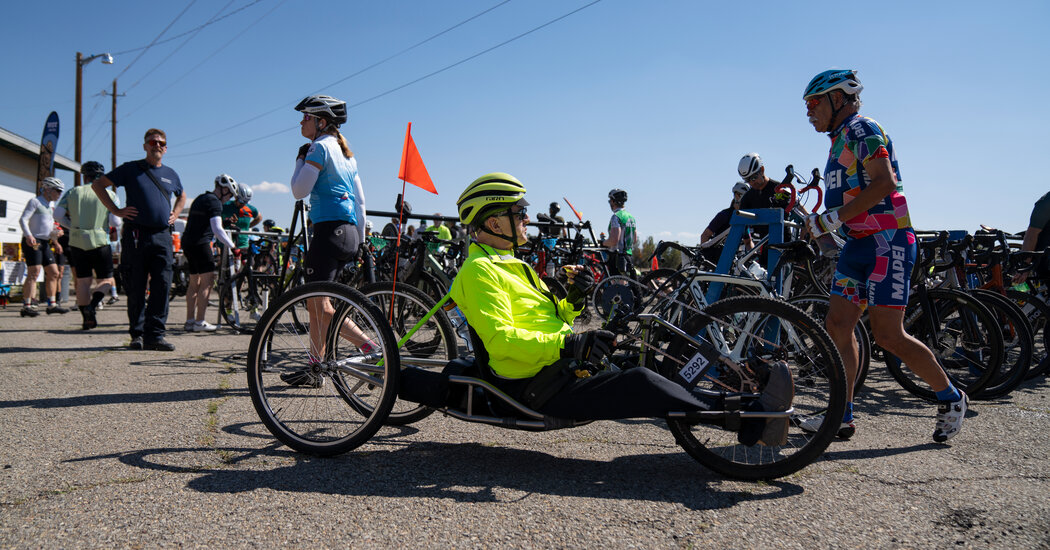Penny Simkin, a childbirth educator and author who was often described as the “mother of the doula movement,” died on April 11 at her home in Seattle. She was 85.
The cause was pancreatic cancer, said her daughter, Linny Simkin.
Ms. Simkin, a physical therapist turned birth educator, was a pioneer in helping women have a better experience during and after birth. Doula is the Greek word for “female servant,” and it was embraced by alternative birth professionals sometime in the 1970s or ’80s to refer to someone who supports mothers during labor. In books, workshops and training organizations, Ms. Simkin helped popularize that role and worked as a doula herself.
Doulas are not medical professionals; their role is to provide comfort to women in the delivery room as well as postpartum care at home. That care might include snacks, massages or warm compresses but also more substantive assistance, like suggesting movements to ease labor pains or help with breastfeeding.
Ms. Simkin’s innovations included a device called the squatting bar, which is attached to a hospital bed for the mother to hang onto and squat, a position that opens the pelvis and allows gravity to help with the baby’s delivery.
Her work came out of the natural childbirth movement of the 1970s, when alternatives to the standard hospital birth were being explored. But she was agnostic about home versus hospital deliveries and about pain-relieving measures. Her focus, always, was on the mother.
Ms. Simkin surveyed thousands of women about their birth experiences, to better train doulas in preparing women for childbirth. “How will she remember this?” she exhorted her students.
Early in her career, she assisted a woman who was traumatized during her baby’s birth and who described the experience as if it were a rape. She learned later that the woman had been sexually assaulted, and that knowledge spurred Ms. Simkin, with her colleague Dr. Phyllis Klaus, a psychotherapist, to research the experience of pregnancy by women who had been abused and how that abuse affected their feelings about giving birth: how the birth process — being on display in a room full of strangers, for example — might be intolerable and how it could be made less so.
Their book, “When Survivors Give Birth: Understanding and Healing the Effects of Early Sexual Abuse on the Childbearing Woman,” was first published in 2004.
In 1992, Ms. Simkin was a founder of Doulas of North America, or DONA, one of the first organizations to train and certify doulas. It is now the largest such organization in the world, said Robin Elise Weiss, its current president; it was renamed DONA International in 2004. Ms. Simkin’s co-founders were Dr. Klaus; Annie Kennedy, a maternal health advocate; and two pediatric researchers: Dr. Klaus’s husband, Dr. Marshall H. Klaus, a neonatologist, and Dr. John H. Kennell, a pediatrician.
In the 1960s, Dr. Marshall Klaus and Dr. Kennell researched maternal-infant bonding, showing how newborns thrived from contact with their parents. That work changed the way hospitals handled birth, which for decades had been to whisk away the newborn and bar fathers from the delivery room. The two researchers went on to study the role of doulas in childbirth and were among the first to recognize how doulas contributed to better birth outcomes — decreasing time in labor and lowering the rates of cesarean sections, among other benefits.
“Birth never changes,” Ms. Simkin told The Chicago Tribune in 2008. “But the way we manage it, and the way we think of it, has.”
Penelope Hart Payson was born on May 31, 1938, in Portland, Maine, the third of six children of Caroline (Little) Payson and Thomas Payson, who owned a hardware store. Penny grew up in Yarmouth, Maine, and studied English literature at Swarthmore College in Pennsylvania, where she met Peter Simkin, a medical student. They married in 1958, when she was a junior.
After graduating, she studied physical therapy at the University of Pennsylvania, and when she and her husband moved briefly to England for his medical studies, she shadowed physical therapists there who were applying their work to childbirth. That experience sparked her interested in maternal care.
In addition to her daughter Linny, Ms. Simkin is survived by two other daughters, Mary Simkin Mass and Elizabeth Simkin; her son Andrew; nine grandchildren (she attended eight of their births); and five great-grandchildren. Dr. Simkin, a professor emeritus of medicine at the University of Washington in Seattle, died in 2022.
Ms. Simkin was the author or co-author of six books, including, with Janet Whalley, Ann Keppler, Janelle Durham and April Bolding, “Pregnancy, Childbirth and the Newborn: The Complete Guide,” first published in 1979, which has sold over a million copies. By her estimation, she prepared 15,000 individuals — mothers, their partners and other family members — for childbirth.
“Penny’s work inspired everything I do,” said Dr. Neel Shah, now chief medical officer at the Maven Clinic, the world’s largest virtual clinic for women and families, and a former professor of obstetrics and gynecology at Harvard Medical School.
Dr. Shah, who advises policymakers and institutions on maternal care, recalled the moment over a decade ago when a midwife handed him a copy of Ms. Simkin’s “The Labor Progress Handbook” (2000). At the time, he was chief resident at Brigham and Women’s Hospital in Boston.
“It blew my mind,” he said in an interview. “It wasn’t all cotton candy and rainbows. It was like, Here are the positions you can do in labor to help it progress that make sense anatomically and physically. One of the reasons we do C-sections is because labor isn’t progressing. Humans have been giving birth for quite a long time, and they used to walk around while doing so, until hospitals took that away. Penny pointed that out and basically wrote a whole book on how to support people going through the most awesome experience of their lives. Things I never learned in medical school.”
He added: “It used to be that if a baby was born unscathed, with all its fingers and toes, that was considered a successful birth. But that’s a low bar. Penny’s biggest gift was daring people to imagine the childbirth care we all deserve.”







